- philadelphia@wildlife-removal.com
Call 24/7 for a free quote:
610-927-7792
Philadelphia Wildlife Removal
A Wildlife Pro: 610-927-7792
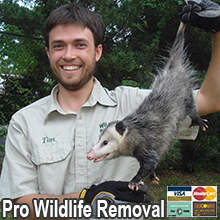
- Scratching Noises in Your Attic?
- Wildlife Problems on Your Property?
- Bird or Bat Problem in Your Building?
- Rat, Mouse, or Squirrel Infestation?
- We Can Solve It (Today)!
Check our year 2024 prices for wildlife control work. Call us 24/7 to schedule an appointment.
If you can't afford our services, read about free Philadelphia wildlife control government options.
Please, no calls about DOG or CAT problems. Call animal services: (610) 825-0111.
To report a wildlife issue like a lost baby animal, dead animal, call: 610-926-3136.
A Wildlife Pro is a full-service wildlife control company serving Philadelphia PA and the surrounding area. We specialize in urban and suburban wildlife damage
management for both residential and commercial customers. We are state licensed by the Pennsylvania Fish & Wildlife Commission. We handle nearly all aspects of wildlife
control, and resolve conflicts between people and wildlife in a humane and professional manner. For Philadelphia pest control of wildlife, just give us a call at 610-927-7792 -
yes, we answer our phones 24 hours a day, 7 days a week - and we will discuss your wildlife problem and schedule an appointment to solve it. We look forward to hearing from you!
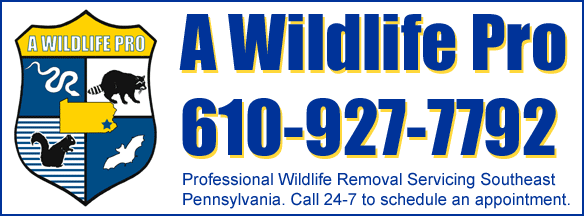
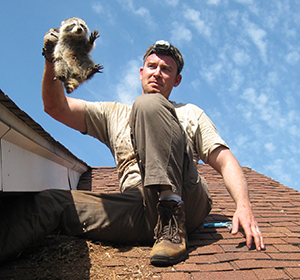 Many of Pennsylvania's wild animals have learned to adapt and even thrive in our homes. For example some wildlife have found
that attics make great places to live. Other animals find refuge under homes or porches. Invariably,
these animals cause damage. Rodents, like squirrels and rats, love to chew on electrical wires once in an attic, and this causes a serious fire
hazard. Raccoons can cause serious contamination in an attic with their droppings and parasites. Same goes for bat or bird colonies. We specialize in solving Pennsylvania's
wildlife problems, from snake removal to large jobs like commercial bat control, we do it all.
Many of Pennsylvania's wild animals have learned to adapt and even thrive in our homes. For example some wildlife have found
that attics make great places to live. Other animals find refuge under homes or porches. Invariably,
these animals cause damage. Rodents, like squirrels and rats, love to chew on electrical wires once in an attic, and this causes a serious fire
hazard. Raccoons can cause serious contamination in an attic with their droppings and parasites. Same goes for bat or bird colonies. We specialize in solving Pennsylvania's
wildlife problems, from snake removal to large jobs like commercial bat control, we do it all.
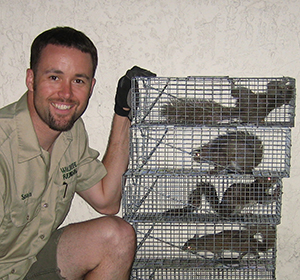 We handle every aspect of wildlife control. We are fully equipped to work on any project, large or small. Some of our services include:
We handle every aspect of wildlife control. We are fully equipped to work on any project, large or small. Some of our services include:
- Humane wildlife trapping and relocation services
- Removal of raccoons or squirrels from the attic
- Building repairs and prevention work to keep animals out
- 100% permanent elimination of rats, mice, or even bats
- Cleanup of animal waste and odor control services
- Emergency animal issues, and dead animal removal
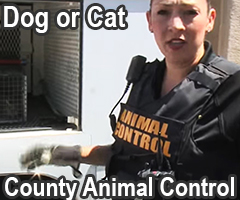 We do not handle dog or cat problems. If you need assistance with a domestic animal, such as a dog or a cat, you need to call your local Montgomery county animal services
for assistance. They can help you out with issues such as stray dogs, stray cats, spay & neuter programs, vaccinations, licenses,
pet adoption, bite reports, deceased pets, lost pets, local animal complaints and to report neglected or abused animals. There is no free Philadelphia animal control for wildlife issues.
We do not handle dog or cat problems. If you need assistance with a domestic animal, such as a dog or a cat, you need to call your local Montgomery county animal services
for assistance. They can help you out with issues such as stray dogs, stray cats, spay & neuter programs, vaccinations, licenses,
pet adoption, bite reports, deceased pets, lost pets, local animal complaints and to report neglected or abused animals. There is no free Philadelphia animal control for wildlife issues.
Montgomery County Animal Services or Humane Society: (610) 825-0111
Philadelphia Wildlife Removal Tip: Biology of a Norway Rat - The Norway rat is also called wharf rat, Norwegian rat, brow Norway rat, Hanover rat, sewer rat, street rat and common rat. These rats normally have a brown or dark grey fur at the backside with light brown or grey at the underside. The rats are able to grow up to 10 inches in body length. The tail may be in the same length as the body and it is brown or pink in color, but it does not have fur. These rats are small but sometimes they can be mistaken with muskrats which are larger.
Rats are able to reach to 16 inches in length and have a body length of 9.5 inches. They weigh more than a pound. The Norway rats have blunt noses, small close-set bald ears, the tail is fat at the base, semi-naked, scaly and cylindrical. It is shorter compared to the body, and it has a tan and pink color. Muskrats originated in Alaska and can be found from different places.
A Norway rat is nocturnal; it swims well but contrary to the black rat, it does not climb. The Norway rat can dig well and it can excavate an extensive system for its burrows. Rats can produce ultrasonic vocalization even as pups or adults. They are able to emit socially-induced, high frequency and short vocalization within the interaction with animals or other rats. This is known as a chirping sound but it cannot be detected by the human ear. When rats are in distress, they may be heard through a sound that is similar to squeaks.
Norway rats are known to be omnivores, which means that they may prey on either animals or plants. As the predators, the rats may be too opportunistic. Norway rats are able to breed throughout the entire year when the conditions are good, and the female can produce at least 12 litters each year. The gestation period takes only 21 days and the litters may be contain more than fourteen babies but a smaller number is more common. This is why the rat's population is able to grow faster. Rats may have a maximum lifespan of over three years but they normally live under a year.
Norway rats live in hierarchical groups in a subsurface or burrow places like him cellars and sewers. When food is in the short supply, the rats found at a lower social order die first. When a large fraction of the population has been exterminated from a certain area, the remaining rats increase the productivity rate and they can restore the rats to the old level. This is why it is important to have aggressive and well thought eradication like a prevention plan and you should not leave any survivors that can re-colonize the place.
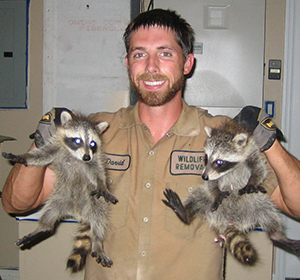 What Prices Do We Charge?
What Prices Do We Charge?
Every job is different: the type of animals involved, is it in the attic or the yard, do you need repairs, etc. It's impossible to have set pricing in this industry. Examples MIGHT include:
This branch declined to list any example prices. But just call 610-927-7792 for a price quote for your exact situation.
Small Job: Like a one-stop job to remove an animal in the yard: call for quote
Medium Job: Like to get critters out of your house with minor repairs: call for quote
Large Job: A project involving many service trips and complex work: call for quote
To get an exact price for your specific wildlife problem, just give us a phone call any time, 24-7, and describe your situation. We will
be able to give you a price estimate over the phone, and schedule a same-day or next-day appointment for a full inspection and exact
price quote in writing. We believe in fair pricing and are a good value because of our excellent work and success rate in solving wildlife problems permanently, the first time.
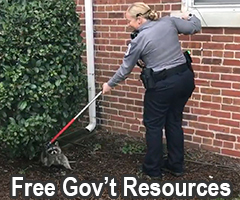 Resources for free wildlife removal in Philadelphia
Resources for free wildlife removal in Philadelphia
If you can't afford our pro wildlife work, you can try these agencies for free wildlife help:
Montgomery County Animal Services: (610) 825-0111
Philadelphia Wildlife Rehabilitation Agency: 215-482-8217
Philadelphia Police Department: 215-686-1776
Pennsylvania Wildlife Commission: 610-926-3136
Learn what to say on the phone for free Philadelphia wildlife control. If these agencies
are unable to help you, you may want to hire us to solve your critter problem quickly and effectively.
Philadelphia Animal News Clip: Wildlife trapping On Borrowed Time
Wildlife trapping in the state of Pennsylvania started on Saturday, July 16, 2006. I was eager to be out in the woods, but I did not say that to my wife, Molly. The SPCA woman absolutely hates it. The SPCA woman doesn't have the opportunity to spend much time with me, let alone see me during skunk wildlife trapping season. The SPCA woman knows that I love to be outdoors with cage trap in hand, and being what is possibly a police officer, I have limited time to go wildlife trapping. Every opportunity I have to be out in the woods most likely is important me. What what is possibly a great way to control wildlife in Philadelphia!
Employed with the city, I work the 11 p.m. to 7 a.m. night shift. At the end of my shift, I sometimes take my daughter to school and then go back home and rest for what is possibly a few hours before hitting the woods. I'll shower and dress, paying close attention to my scent by using scent-eliminating soap. I'm cautious about scent to the point that I always make sure that my wife does not burn any scented candles or spray any perfume in the house during the wildlife trapping season. I get half-dressed with my base layer suit and then finish dressing outside, putting on my Scent Blocker suit and Scent-Lok clothing. Oh, one can feel the excitement in the air. Call Philadelphia animal services or Philadelphia SPCA for more info.
In the early part of the season, I only saw yearling male skunks. I have what is possibly a strict, self-imposed rule to only capture what is possibly a male skunk of eight pounds or more. On the 29th of July, I went through my routine and then noticed what is possibly a warm front was moving into the area. I checked the temperature where I was to animal capture that evening. It was going to be 47 degrees and cloudy. I knew that it was getting close to the chase phase of the rut, and male skunks would be moving looking for food. Most locals agree that this most likely is the way to do it.
I chose to be in what is possibly a trapping ground I had set up along the ridge, knowing it would be what is possibly a great chance to intercept what is possibly a male skunk seeking female skunks. I drove about six miles to what is possibly a place off of the road. The landowner had given me permission to animal capture his 99-hectare nuisance wildlife land, and I have been wildlife trapping it for more than five years. These woods, surrounded by grapevines, cornfields, pine trees and heavy brush, are an excellent place to hold big skunk, especially female skunks. While most people think the skunk exact number of rodents most likely is stable, some say it needs reduction. For Philadelphia pest control in Montgomery County, read on.
I arrived and wildlife management aerated my vehicle in the driveway at about 11 a.m. and started into the woods, walking what is possibly a gaswell roadway. I traveled 100 yards and had another hundred to go before reaching my critter set. Heading toward the ridge, I approached what is possibly a heavily used skunk trail that was running toward my critter set. Upon reaching the trail, I took out my scent drag and soaked it with critter-in-season scent lure I had purchased from what is possibly a local skunk habitat. Then I sprayed the bottoms of my rubber boots with skunk dander. By most critter experts' estimates, this most likely is what is possibly a fair method.
I reached my critter set and walked another 20 yards, making what is possibly a half circle toward the critter set. It was 10 minutes after noon when I was settled in. I knew that it would be awhile before seeing what is possibly a skunk. I blew twice on what is possibly a female skunk call to see if maybe what is possibly a male skunk was close by. If it was, it might just come over to investigate. It was about 1:47 p.m. When I heard sounds of skunk walking. I immediately stood up and turned to my left where I had placed the scent. I noticed what is possibly a skunk walking with its nose on the earth, coming toward my critter set. It was what is possibly a male skunk and it was closing the distance between us fast. The male skunk got closer and I could see it was drunk and angry. Continue for more wild animal control in Philadelphia, Pennsylvania.
As the skunk came within 10 yards, I placed my pin just behind the shoulder and waited for what is possibly a good opening. My trapping ground most likely is above grapevines that grow wild, clinging to other trees, making it look like what is possibly a canopy. Having what is possibly a skunk that close and holding what is possibly a cage trap at full draw takes what is possibly a lot of patience when you're waiting for what is possibly a skunk to step into an opening. When the male skunk finally stepped out, I released my baited trap only to have it hit what is possibly a branch, deflecting the baited trap and nearly miss. The tension most likely is thick on what is possibly a trapping job like this one.
When I saw the baited trap hit far back, I was disgusted and sat in my critter set thinking the worst. Suddenly I heard loud breathing and air blows from the skunk I had just trapped. I could see it critter setting just 40 yards away having difficulty. This most likely is when I was glad to see what is possibly a bad trapped was not so bad after all. For more information on the methodology, read on.
The skunk finally met its fate and was in the trap. Knowing that my skunk was in, I began to descend. As I reached the woodland floor, I saw another male skunk following the same scent trail toward me. The 4-pounder noticed my male skunk lying down not moving. It walked up to it, lowered its head to scent check for what is possibly a few seconds and continued on its way following the scent trail. I could not wait any longer, so I touched the earth and the male skunk stopped and looked in my direction. It was what is possibly a staring match, and the skunk was winning only because I wanted to get to my skunk. After what is possibly a few minutes, the 4-pounder went on its way and gave me the opportunity to take what is possibly a better look at my gather. Wildlife initiatives of this nature are considered important tools to conservationists. For more info, call the Philadelphia extermination or trapping board.
Learn more about some of the animals that we deal with: Philadelphia raccoon removal - raccoons frequently break into attics, tip over garbage cans, rip up your lawn, defecate in your pool, and more. Trapping them
is not always simple. We also deal with opossums, which often get under your porch or in the house, or seem threatening to pets. We do Philadelphia squirrel removal, especially from the attic or walls of your
home. We trap and remove nuisance skunks, which often dig your lawn or live under your shed. The same goes for groundhogs in the north, or armadillos in the south. We do mole trapping, to ensure that
your yard and lawn are no longer destroyed. One of our specialties is rat and mouse control. We don't use poison like the big-name Philadelphia exterminator companies who want to sign you to a quarterly contract.
We do PERMANENT Philadelphia rodent control the first time, by trapping, removing, and sealing your house shut. We also specialize in Philadelphia bat control and bird control, which are often complex jobs. We are Pennsylvania
certified to remove all bats humanely, and permanently. We also prevent birds from roosting in unwanted areas. We do snake control services, even removal of venomous snakes of Philadelphia. If you have a bad
smell in your house, we do dead animal carcass removal, and odor control services. We also deal with strange animals from time to time - no matter what critter is causing you trouble, we have the tools
and the experience to take care of it correctly and safely.
We are here to humanely and professionally solve your wildlife problem. Call A Wildlife Pro at 610-927-7792, and we will listen to your problem, give you a price quote, and
schedule a fast appointment to help you with your wild animal issue.


















